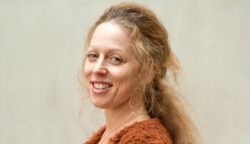The Daily Nexus talked to UCSB Theater and Dance Professor and performance theorist Ninotchka Bennahum to discuss her latest book, Carmen — A Gypsy Geography, which examines the novel by Prosper Mérimée set to music in the famous opera by Georges Bizet. The book explores the relationship between the titular character, flamenco and dance itself in the context of Gypsy culture and history while showcasing Bennahum’s expertise in the world of creative art through publication.
Q: What about Carmen inspired you to write a book about her cultural impact?
“I’ve been writing about flamenco for many years now and I was specifically interested in this mythic figure of the gypsy who shows up along the Silk Road throughout Spain and the Islamic-Mediterranean world and I was interested in her representation in art and in dance as an archive of living memory. She stands for histories that are either unwritten or are no longer present. So I wanted to write a history of humans and I wanted to write a history of flamenco and I found that they fused in this figure of Carmen.”
Q: How has dance evolved throughout history and how has it affected your own life?
“I have been a dancer all of my life. I’ve danced since I was five years old. I was a ballet dancer so I have a visceral and kinesthetic connection there as a mover. So yeah I love dance and I believe that it teaches us a good deal about society and history. We live in a body so a historian has a great deal of information to gain from dance. So that’s the first thing. It’s like you’re putting a cell under a microscope. Dance is living history. Bodies that occupy public space and imagination, the popular consciousness of society, are inscribed with economic, political and social meaning as well as art. Dancing bodies carry the signed signature of a culture, so in Baroque times, the body was a record of state. In the 1800s, the body communicated the ideals of the Enlightenment. In the 19th century, the body is this flesh and bone erotic woman on the Russian ballet stage and so on and so forth. So bodies are the evidence of history if you know how to read them in conjunction with other pieces of evidence.”
Q: When did you start studying dance? What about it inspired you to pursue it further?
“I have been one of the dance historians at the American Ballet Theater in New York for 16 years and I’ve taught the main company and various professional dancers of the American Ballet Theater as well as in the school and so my next book will be on ballet, my third book. I’ve also done a couple of art catalogues and an edited modern dance anthology textbook. I made the decision to turn a little bit to the relationship of ballet to New York so I’m thinking about that and working on that a little bit now and I’m also thinking of a couple of other things.”
Q: What are your hopes in terms of the publication of Carmen and why did you write the book originally?
“Carmen is the most performed opera in history. It is in every opera house, every year around the world. It started as a newspaper story. In 1830, it was a story published in Madrid of a gypsy girl who was murdered by her lover because she was cheating on him. She wanted to be free. So I started many years ago in the libraries of Paris looking at hundreds and hundreds of Carmen’s; like millions of them and studying the history of the flamenco technique and the Spanish classical technique in the opera. And after I did that, years after I finished that, I realized I was no longer interested in that. What I was really interested in was the relationship of Islam and architecture and history to Carmen. So I widened the net and that’s how I started.”
Photo courtesy of ia.ucsb.edu
This story is a Daily Nexus online exclusive.

















